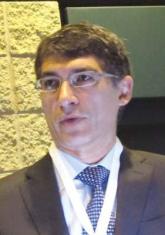News

Interferon-free antiviral regimens achieve high response rates in HCV
Key clinical point: A 12-week course of oral daclatasvir, asunaprevir, and beclabuvir, with or without ribavirin achieves a high response rate in...

AT THE INTERNATIONAL LIVER CONGRESS 2015
VIENNA – More than 75% of patients with decompensated cirrhosis due to chronic hepatitis C virus (HCV) infection achieved a sustained virologic response at 12 weeks (SVR12) with all-oral HCV therapy in a routine clinical practice setting.
SVR12 was achieved in 74%-81% of patients treated with various regimens containing the direct antiviral agents sofosbuvir (Sovaldi) and simeprevir (Olysio), with or without ribavirin, based on interim data from the ongoing HCV-Target study. “All-oral DAA therapy has been readily used to treat HCV cirrhosis with MELD (Model for End-Stage Liver Disease) score greater than or equal to 10,” study investigator Dr. Rajender Reddy reported at the meeting sponsored by the European Association for the Study of the Liver.
“There is limited experience with all-oral DAA [direct antiviral agent] therapy in patients who have advanced HCV liver disease,” said Dr. Reddy, who is director of hepatology and medical director of liver transplantation at the Hospital of the University of Pennsylvania in Philadelphia. “HCV therapy in decompensated cirrhosis in the era of interferon-based therapy has been associated with suboptimal response and poor tolerability.”
Alternatively, these early findings from HCV-Target suggest that all-oral DAA therapy is not only effective in patients with advanced liver disease, but also that such treatment is well tolerated, he said.
HCV-Target is a longitudinal, observational study involving an international consortium of academic and community medical centers in the U.S., Canada, and Europe. HCV treatment is administered according to the local standard of care and the regimen selected by the patient’s health care provider.
As of October 2014, 2,204 patients were enrolled and 253 had a baseline MELD score of 10 or higher; 216 had completed treatment and had 12 weeks’ follow-up data available for analysis. Of these, 76 received a combination of sofosbuvir and ribavirin, 108 had been treated with sofosbuvir and simeprevir, and 32 had received all three drugs.
The mean age of patients was 59 years, but ranged from 38 to 80 years. The majority (59%) of patients had failed prior treatment, and around 73% had a history of prior hepatic decompensation, suggesting advancement of their liver disease.
“Sustained virologic response varied by genotype and regimen,” Dr. Reddy observed. SVR12 rates ranged from 52% to 74% in patients with genotype 1 (GT1). Most (63%) of these patients had received a combination of sofosbuvir and simeprevir, which yielded the highest SVR12 rates (72% in treatment-experienced and 78% in previously untreated GT1 patients).
SVR12 was 81% in patients with GT2, the majority (97%) had been treated with sofosbuvir plus ribavirin, with just 3% receiving all three drugs in combination.
SVR12 was the lowest, at 39%, in patients with GT3, all of whom had received sofosbuvir plus ribavirin.
Relapse rates were highest in GT3 patients, at 46% versus 26% in GT1 and 7% in GT2 patients.
SVR12 rates were also evaluated in relation to the MELD score. Of interest, said Dr. Reddy, was that patients with a MELD score of 10-15 (n=187) and those with a MELD score of 16-21 (n=21) had comparable SVR12 rates that ranged from 55% to 73%, with the lowest response rates being seen in patients treated with sofosbuvir plus ribavirin. Although there were only eight patients with a MELD score greater than 21, SVR12 was 100%.
Multivariate analysis to look at predictors of response was performed exclusively in GT1 patients and showed that being GT1a and having elevated bilirubin levels were negative predictors of response, with respective odds ratios of 0.39 (P = .069) and 0.46 (P = .002). Higher albumin levels, however, were associated with better outcomes (OR = 2.52, P = .026).
In terms of safety, 86% of 234 patients experienced any adverse event. Dr. Reddy highlighted anemia, which was more common (seen in about 30% of patients) with the ribavirin regimens, and photosensitivity, which was only seen in patients treated with simeprevir.
There were 44 serious adverse events; 16 were due to hepatic decompensation, 10 resulted from infections, 3 were deaths (one of which was due to liver failure), and 12 were liver transplants.
“Long-term follow-up is needed to assess the impact of SVR on the reversibility of liver disease,” he said.
The study is sponsored by the University of Florida and the University of Carolina at Chapel Hill and funded in part by AbbVie, Gilead, Janssen, Kadmon, Merck, Bristol-Myers Squibb, and GlaxoSmithKline. Dr. Reddy has acted as an ad-hoc advisory board member for and received research support from Gilead, Bristol-Myers Squibb, Merck, AbbVie, and Janssen.

Key clinical point: A 12-week course of oral daclatasvir, asunaprevir, and beclabuvir, with or without ribavirin achieves a high response rate in...
Key clinical point: An all-oral simeprevir-sofosbuvir combination outperformed peginterferon/ribavirin/sofosbuvir in patients with genotype 1a HCV...
